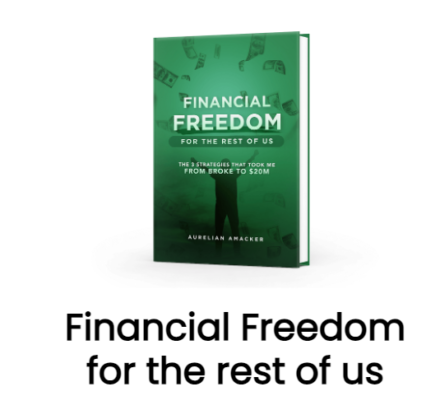One of my latest side hustle experiments is as a User Interviews survey respondent.
(I’ve earned $105 so far, in exchange for about an hour and a half.)
UserInterviews.com
4.1
User Interviews is a legit facilitator of online (and in-person) consumer research studies. Participants can get paid (generally $50-150/hr) to share their opinion and shape future products and services. While this won’t replace your day job, it can be a nice supplemental income.
One of the best-paying survey companies I’ve found.Easy to sign-up.Lots of new studies added every week.
Can be difficult to get selected.
What is User Interviews?
User Interviews is a consumer research company that helps match companies with questions to consumers with opinions. (That’s you!)
Often, these companies are launching a new product or testing a new website or app design, and want to get real feedback from prospective users. So far, they’ve helped over 4,500 companies gather that feedback, including household names like:
Adobe
Pinterest
Wayfair
Spotify
Amazon
and more
And since going to market with the wrong product or a confusing website can be a super expensive mistake, those companies are happy to spend some money upfront to help get it right.
Is User Interviews Legit?
Yes, User Interviews is a legitimate facilitator of consumer research projects. Last year, over 87,000 participants got paid and the site adds around 2,500 new studies every month.
Since 2016, the company has paid out over $25 million in incentives. The average study pays over $65.
In total, User Interviews participants have completed over 400,000 sessions across 80,000+ studies.
In late 2022, User Interviews raised an additional $27.5M in venture funding to continue their growth, bringing their total funding to over $43M.
How Does User Interviews Work?
Once you sign up for User Interviews, you’ll be able to see all available projects. For example, here’s what it looks like for me after I log in:
You can see:
how much each study pays
roughly how long it will take
what type of study it is
a brief description of what the researcher is looking for
From there, you can and click on individual studies to learn more (and apply).
You’ll be prompted to complete a brief screener survey for each study you’re interested in. Then, you’ll get a text/email if you’re selected with instructions on next steps.
After the study is complete, you get paid via PayPal, Amazon gift card, Visa gift card, or other digital gift card.
The average participant qualifies for their first study within 24 hours of joining!
Does User Interviews Pay in Cash?
A gift card? WTF? Show me the money!
The biggest beef most people had with User Interviews was the payout options. It used to be that nearly every study only paid via Amazon gift card. (That didn’t really bother me since I knew we’d be spending money at Amazon sooner rather than later.)
However, in response to participant feedback, they expanded their payout options to include PayPal, Visa gift cards, and gift cards for dozens of other stores. But these do vary study to study so just be sure to check you’re happy with the payout method before you apply.
Sign Up Process
Signing up for User Interviews is easy.
From there, you can sign up with one of these options:
An email address, phone number, and password
LinkedIn
Facebook
If you select the email option to create your User Interviews account, you’ll get a text message to verify your phone number.
Next, the system will guide you through a short series of forms about your Professional, Demographic, and Technical details.
Add Your Professional Details
For example, on the Professional page, you’ll fill in your:
Employment status
Job title (some studies are job role-specific)
Work email
Company
Company size
Industry
Add Your Demographic Details
User Interviews will also ask you for some basic demographic information, including your:
First and last name
Date of birth
City
Gender
Ethnicity
Household income
Level of education completed
Marital status
Living situation
Why do they need this information? Companies want to target specific populations for their research, or may need to collect feedback from a diverse audience.
Add Your Technical Details
Finally, you’ll fill in some information about your computer, tablet, and smartphone. Some studies will want to record your reaction when interacting with a new website or online tool, or you’ll have a video call with the interviewer.
For best results, fill in your profile as completely and honestly as possible.
If you signed up with an email address, you’ll be encouraged to connect your LinkedIn and Facebook profiles to qualify for more studies. This helps researchers verify your identity and professional credentials (if applicable).
Who is Eligible to Join User Interviews?
User Interviews is open to participants worldwide, who are at least 18 years old.
Still, as a US-based company, there’s definitely a US-based and English-speaking focus. Per a User Interviews support article:
At the moment, we recruit [participants] in the United States, Canada, Australia, United Kingdom, France, Germany, and South Africa.
If you’re outside of those countries, you’re still welcome to join, but may not qualify for many studies. Might be time to consider another side hustle idea instead.
Filtering and Selecting Paid Studies on User Interviews
To sort through the paid research study listings on User Interviews, use the handy filters in the interface:
You can filter by interviews that are only online or over the phone. Or in-person studies, if you prefer.
The system also lets you filter by a few “popular professions” — mostly in the Tech field — such as IT, Data, Software, and Product Manager.
By default, the studies are sorted by the latest ones added to the platform. Do a little scrolling to see which ones you might qualify for, and apply to those.
Types of Studies on User Interviews
User Interviews specializes in remote market research. This means that most conversations take place over the phone or via webcam video chat.
(It will say in the description or in the screening questions if you need to have webcam capabilities.)
There seems to be more of a business-to-business focus on the site. By that, I mean I tend to see more studies related to specialized work software, skills, or experience than general consumer studies.
That said, there’s still a healthy variety of projects on User Interviews a non-techy person can qualify for.
The four main types of studies are:
1-on-1 Interviews
Focus Groups
Multi-Day Studies
Unmoderated Tasks
In this section, I’ll give a brief explanation of each.
1. 1-on-1 Interviews
Like the name suggests, this is a one-on-one video call or phone call with the researcher. They’ll ask you questions and you’ll answer, or they’ll give you instructions to follow while you share your screen with them.
(My video editing test below was a 1-on-1 interview, where we talked through my editing process and then tested the company’s new software.)
2. Focus Groups
Online focus groups tend to gather 3-8 people in a Zoom meeting (or other online meeting software) to get feedback about a company, product, or service. A moderator will lead the conversation and you can provide your opinion.
3. Multi-Day Studies
Depending on the niche, multi-day studies can pay really well, but I tend to avoid them because my schedule isn’t always conducive. I’d rather be in-and-out in one sitting, but that’s just me!
Most often, you’ll see these for product tests where the researcher wants to get your feedback on their product over a period of several days or weeks.
4. Unmoderated Tasks
In my experience, “Unmoderated Tasks” are the easiest to complete because you don’t need to coordinate schedules with the researchers.
Examples include:
filling out an online survey form
recording your feedback while interacting with a new website or software
Project Screening
As you browse through the available User Interviews studies, you’ll probably begin to answer a few “screener surveys.”
These shouldn’t take more than a couple minutes, and help the companies build a research sample of their target customers.
For example, you might be asked about the software you use, the size of your company, your current role there, or in the case of my “men’s fashion study” — how I cut my hair.
It all depends on the research project and who they’re trying to reach. Use these questions to get a sense of whether or not you’re the ideal person.
Don’t try and force-qualify yourself for stuff you have no business answering. Just be honest so you don’t waste your time or the researcher’s; there are always more studies coming soon.
If you’re in a time crunch, look for studies with the “Quick Apply” icon. These will use information from your profile to bypass some of the normal screening questions.
My Experience w/ User Interviews So Far
I’ve done 4 projects with User Interviews so far, for a total of $105:
The first was a men’s style study, and it was specifically for bald men. Check and mate!
It was a super short online survey, and took less than the 15 minutes suggested.
The next was an interesting phone call about the FIRE (Financial Independence / Retire Early) movement. Since I love talking about that stuff anyway, it was a fun way to make $30.
After that, I got paid $15 to share my opinion about online investment websites, and $50 to test and give feedback on an online video editing tool.
So that’s $105 (in Amazon credit) for a little over an hour and a half, or the equivalent of around $60 an hour. All from home.
I’ve done a handful of other screener surveys but haven’t been selected for more projects yet.
As you click into the screener surveys, you’ll get a better sense of who they’re looking to connect with. I’ve aborted some after a couple questions, realizing I wasn’t a great fit.
How Much Does User Interviews Pay?
Of the studies available on my homescreen right now, the average pay rate is $115 an hour.
(Some were as high as $200 an hour.)
But generally speaking, $1 a minute for this type of stuff is a pretty great hourly rate. It’s much better than you’d do on other online survey apps like Swagbucks or Survey Junkie.
As you might guess, the more specialized the participant the company is looking for, the more they’ll pay. The more general consumer-facing studies tend to pay a little less.
How to Maximize Your User Interviews Earnings
How can you get selected for more User Interviews studies? Patience and persistence are probably the best answers, but there are a few specific things you can do.
Check your Email
I recommend checking the online interface daily or weekly to see if there are new studies you qualify for, but User Interviews does also send emails out about new survey opportunities. Make sure you route those emails to your inbox.
Keep Your Profile Up-to-Date
Since many studies target employees in specific job roles, keep your profile up-to-date and include as many details as possible.
You can do that from the “Edit Profile” option in the drop down under your name:
For example, my User Interviews contact sent me this recommendation when it comes to job titles:
Include your seniority level and any supporting details for best matching:
GM ➡️ Restaurant General Manager
Teacher ➡️ 9th Grade Science Teacher
Freelancer ➡️ Freelance Graphic Designer
Consultant ➡️ Business Operations Consultant
Physician ➡️ Oncology Resident Physician
Accounting ➡️ Certified Public Accountant
For the sake of reference, I changed mine from the somewhat cheeky “Chief Side Hustler” to the hopefully more search engine-friendly “Content Marketer”.
I also connected my account to Facebook and LinkedIn to verify my identity.
Respond Quickly
General population studies fill up quickly. You’ll have your best chance of being selected if you’re among the first to apply.
Be Honest
Fill in your profile truthfully and answer the screener questions honestly.
With hundreds of new studies added every month, why risk losing all those future User Interviews opportunities to try and make a quick buck?
Share with Friends and Colleagues
One cool aspect of User Interviews is you can get paid even if you don’t qualify for a study.
How?
By referring someone who is qualified!
At press time, the site is offering a $30 incentive to help find participants for certain studies:
So definitely keep your immediate network in mind as you’re scrolling through. You might not be a great fit for the study, but you might know someone who is!
User Interviews Alternatives
If you don’t care for User Interviews or are having trouble being selected for projects, not to worry.
While User Interviews is one of the highest paying survey sites, there are other programs where you can make decent money as well.
Respondent
Respondent
4.1
Earn an average of $75 per project, and get notified of upcoming studies you may qualify for.
Respondent is the most similar service to User Interviews I’ve found. The company also specializes in one-on-one market research interviews, mostly done over the phone or online.
According to the site, the average payout is over $100 an hour. Check out our full Respondent review for more.
(I’ve earned $395 so far — $190 of which was for a focus group that involved playing with Legos!)
Rare Patient Voice
Rare Patient Voice
4.5
Patients and caregivers can earn $120/hour while helping advance medical research.
A leading source for medical research, Rare Patient Voice pays patients and caregivers $120 an hour. Most of the studies are phone or webcam interviews, and you can browse a full list of available studies on their site.
If you suffer from any sort of medical condition (even if it’s not super rare), I think this one is worth a look.
FocusGroup.com
FocusGroup.com is run by Sago, a long-running research company. They offer nationwide phone or webcam research opportunities that pay between $75 and $200.
I earned $115 for a 45-minute online survey — check out my full FocusGroup.com review to learn more.
Fieldwork
Fieldwork is a company the runs (mostly) in-person focus groups. I took part in one of their studies in San Francisco, and earned $150 for a 2-hour focus group, plus a $50 bonus prize for showing up early.
They have locations throughout the US.
Fieldwork focus groups normally last 1-2 hours, and pay starts at $75.
Check out my full guide to Online Focus Groups for more money earning opportunities.
Other Online Survey Options
Most of the consumer-facing survey options below won’t have hourly rates nearly as strong as the more industry-specific studies that User Interviews does, but they can still add up and you can knock them out in your spare time.
Here are some of Side Hustle Nation’s top picks:
Swagbucks – Earn up to $35 a survey with this mega-popular app, and get a $10 bonus just for signing up!
Survey Junkie – Take 3 surveys a day and earn up to $100 a month.
KashKick – Get paid to answer surveys, test games, and try new products.
InboxDollars – Get a $5 bonus just for signing up!
American Consumer Opinion – Join millions of free members and earn up to $50 per survey.
Branded Surveys – One of the best-rated survey sites with millions paid out.
Is User Interviews Worth It?
Is User Interviews worth your time? It’s certainly not passive income, but for the work involved, I’d say the pay rate is pretty strong. (Generally $50-200 an hour.)
For the remote research projects, there’s no commuting time or cost, which is an advantage over some other side hustles.
A few drawbacks to consider would be:
You’re not getting paid for time spent doing screener surveys. These are generally short (less than 5 minutes), but can add up and get frustrating if you don’t get selected.
There’s a limit to how much you can reasonably expect to make on User Interviews. Given the nature of this side hustle, it’s not going to replace your day job salary.
Most studies only pay out in via gift cards. Again, Amazon credit is almost as good as cash in our house, so that’s a non-issue for me.
Still, User Interviews is an interesting and viable way to make some extra money.
Finally, consider the opportunity cost. What else could you be doing with your time?
If you’re confident you could earn better than the $50-200/hour these projects pay doing something else, by all means, go do that instead!
Your Turn
Have you participated in a User Interviews study yet? What did you think?
Let me know in the comments below!
Serious About Making Extra Money?
Start Your Free $500 Challenge. My free 5-day email course shows you how to add $500 to your bottom line.
Join the free Side Hustle Nation Community. The free Facebook group is the best place to connect with other side hustlers and get your questions answered.
Download The Side Hustle Show. My free podcast shares how to make extra money with actionable weekly episodes.
Pin it for later:


















